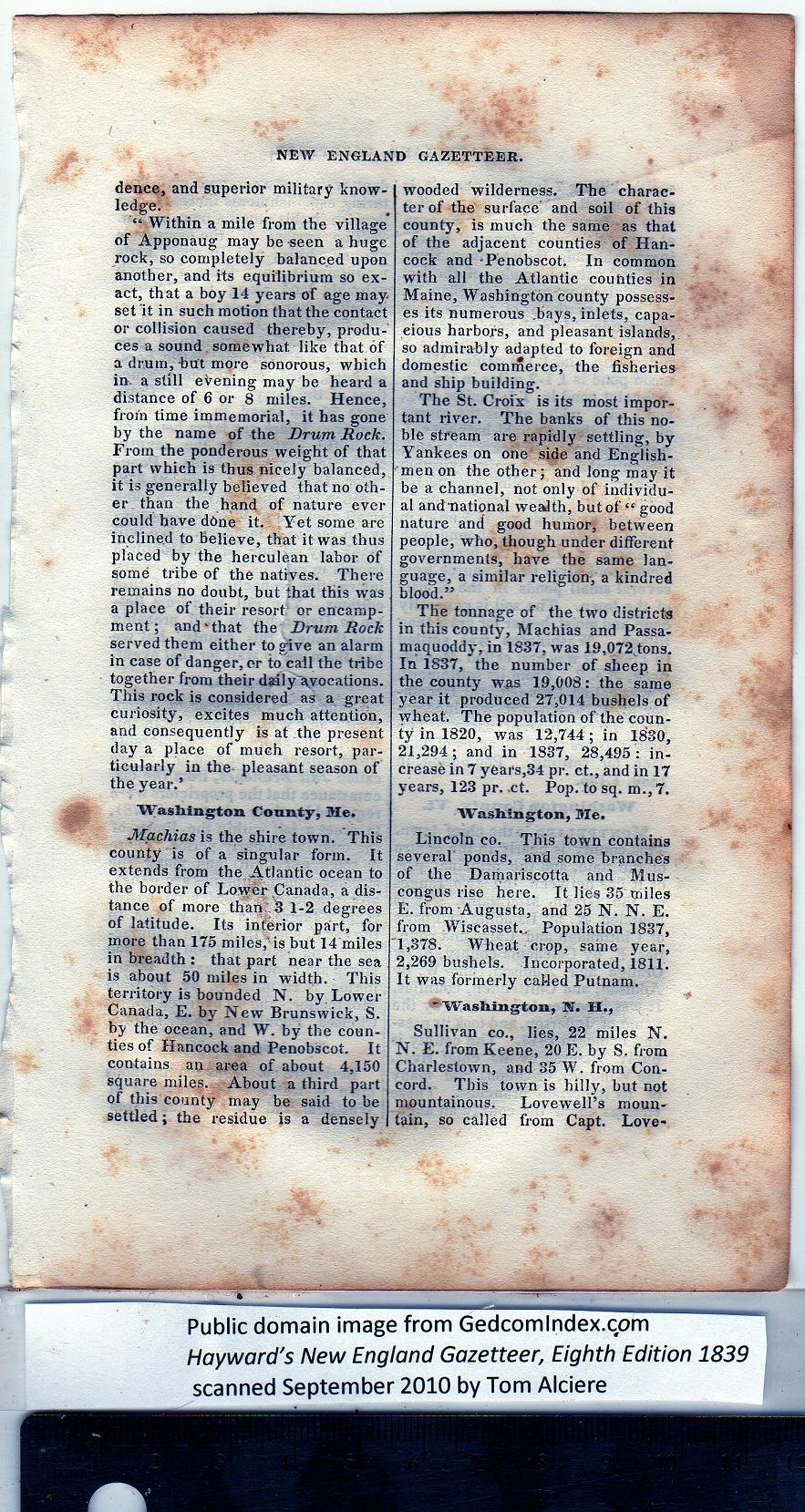|
dence, and superior military know-
ledge.
“ Within a mile from the village
of Apponaug may be seen a huge
rock, so completely balanced upon
another, and its equilibrium so ex-
act, that a boy 14 years of age may.
set it in such motion that the contact
or collision caused thereby, produ-
ces a sound somewhat like that of
a drum, but more sonorous, which
in. a still evening may be heard a
distance of 6 or 8 miles. Hence,
from time immemorial, it has gone
by the name of the Drum Rock.
From the ponderous weight of that
part which is thus nicely balanced,
it is generally believed that no oth-
er than the hand of nature ever
could have done it. Yet some are
inclined to believe, that it was thus
placed by the herculean labor of
some tribe of the natives. There
remains no doubt, but that this was
a place of their resort or encamp-
ment; and‘that the Drum Rock
served them either to give an alarm
in case of danger, or to call the tribe
together from their daily'avocations.
This rock is considered as a great
curiosity, excites much attention,
and consequently is at the present
day a place of much resort, par-
ticularly in the pleasant season of
the year.’
Washington County, Me.
Machias is the shire town. This
county is of a singular form. It
extends from the Atlantic ocean to
the border of Lower Canada, a dis-
tance of more than .3 1-2 degrees
of latitude. Its inferior part, for
more than 175 miles,* is but 14 miles
in breadth : that part near the sea
is about 50 miles in width. This
territory is bounded N. by Lower
Canada, E. by New Brunswick, S.
by the ocean, and W. by the coun-
ties of Hancock and Penobscot. It
contains an area of about 4,150
square miles. About a third part
of this county may be said to be
settled; the residue is a densely i
wooded wilderness. The charac-
ter of the surface and soil of this
county, is much the same as that
of the adjacent counties of Han-
cock and Penobscot. In common
with all the Atlantic counties in
Maine, Washington county possess-
es its numerous .bays, inlets, capa-
eious harbors, and pleasant islands,,
so admirably adapted to foreign and
domestic commerce, the fisheries
and ship building. |
The St. Croix is its most impor-
tant river. The banks of this no-
ble stream are rapidly settling, by
Yankees on one side and English-
men on the other; and long may it
be a channel, not only of individu-
al andmational wealth, but of “ good
nature and good humor, between
people, who, though under different
governments, have the same lan-
guage, a similar religion, a kindred
blood.”
The tonnage of the two districts
in this county, Machias and Passa-
maquoddy, in 1837, was 19,072 tons.
In 1837, the number of sheep in
the county was 19,008: the same
year it produced 27,014 bushels of
wheat. The population of the coun-
ty in 1820, was 12,744; in 1830,
21,294; and in 1837, 28,495: in-
crease in 7 years,34 pr. ct., and in 17
years, 123 pr. ct. Pop. to sq. m., 7.
Washington, Me.
Lincoln co. This town contains
several ponds, and some branches
of the Damariscotta and Mus-
congus rise here. It lies 35 miles
E. from Augusta, and 25 N. N. E.
from Wiscasset. Population 1837,
1,378. Wbeat crop, same year,
2,269 bushels. Incorporated, 1811.
It was formerly caHed Putnam.
’ Washington, N. H.,
Sullivan co., lies, 22 miles N.
N. E. from Keene, 20 E. by S. from
Charlestown, and 35 W. from Con-
cord. This town is hilly, but not
mountainous. Lovewell’s moun-
tain, so called from Capt. Love- |
